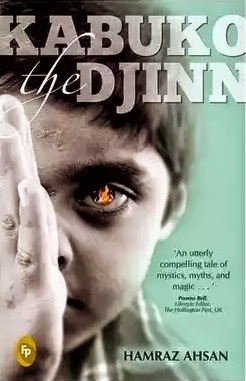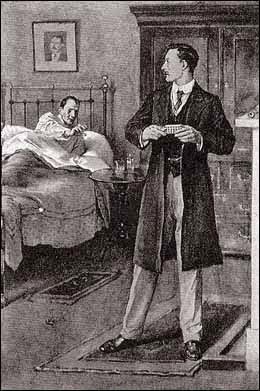 |
| © Random House |
This is not a conventional review. Rather, these are my observations of a book, a legal thriller, which offers a profound insight into how bad things can happen all of a sudden to good people, happy families, and destroy their seemingly pleasant lives.
In recent years, few novels have touched me as deeply and compellingly as Defending Jacob by William Landay. I think it is because as a father of a seventeen-year old teenager I could feel a sense of empathy for Andrew Barber and his wife, Laurie, whose fourteen-year old son, Jacob, is accused of murdering his classmate in the beautiful Cold Spring Park in a Massachusetts suburb. Jacob is like any teenager, reclusive and rebellious, and mostly preoccupied with his thoughts, his cellphone, and his laptop. The question is what lies beneath.
I read books with a certain level of detachment. I try not to get involved in what transpires between the covers of a book, however gut-wrenching the story may be. But sometimes it’s not possible to be a mere witness to the emotional drama unfolding in the pages in front of you. You leap right into the narrative because somewhere in the back of your head you feel you have a stake too, in this case knowing what happens to the once happy Barber family.
If you are a devoted husband and a doting father, you’ll feel the pain of Andy Barber who refuses to admit to himself that his son could be guilty because he loves him deeply and because he owes it to him. It’s a terrible choice for any father to make, especially if, like Andy, you are a respected and a successful assistant district attorney who has stood by his conviction that the law must take its course no matter who the suspect is. You know you have to stick by your son because you’re responsible for him and because he is your flesh and blood. Hell with conviction and all that. You know you are wrong but you also know you are right.
 |
| © www.williamlanday.com |
As I read through the book, I found myself frequently walking beside Andy, who is forced to go on leave owing to possible conflict of interest, and watch him do everything in his capacity to defend his son and prove he is innocent. He hires a close acquaintance to fight the case. For me, this is Andy’s story more than Jacob’s; the father is the pivot around which the son’s fate hinges.
Let’s not forget Laurie Barber. Once the cynosure of all eyes, Andy’s beautiful wife slowly disintegrates, first with the onslaught of her son’s indictment and the possibility of his guilt and then when, after years of a beautiful love marriage, she learns from Andy that his side of the family has a history of violent behaviour. She feels betrayed. In many ways Laurie suffers more than Andy because, unlike her husband, she is willing to acknowledge that their son could be the murderer of his fellow eighth grader Benjamin Rifkin. She feels responsible for Jacob and that they must have done something wrong raising him.
What Laurie Barber goes through would be any mother’s worst nightmare, as defending Jacob takes its toll on her and the family she has loved and cherished.
Final word
William Landay has produced a cracker of a novel. The suspense is intense, in a non-brutal way, and consistent throughout the 448 pages, alternating between the Barbers’ isolated existence at home and shamed public life in the courtroom, and finally culminating in an unforeseen end.
Defending Jacob is a legal thriller in every sense of the term as William takes the reader through a realistic and gripping homicide investigation and judicial process complete with jury and grand jury, and courtroom scenes. He explains the legal terms including how the system works as well as the theory of a murder gene that the prosecutor is more than keen to bring up in court. I found that aspect of the book very interesting. Can someone commit a crime because it’s in his or her DNA? Is it admissible as evidence in court? The writer offers plausible answers.
The author’s writing style is engaging and he keeps you engrossed with twists and turns every few pages so much so that you feel compelled to finish the book in two sittings as I did.
The author
William Landay was an assistant district attorney in Boston before he took to writing fiction and authored the award-winning Mission Flats and The Strangler—the latest in a long line of seasoned attorneys turned successful writers. He brings his firsthand experience as a legal brain to bear upon his third novel, Defending Jacob.
Earlier this month, when I wrote to William requesting an interview based on this novel, he replied saying that he was too busy at the moment to answer—he is working on his next suspense novel among other things—and, very thoughtfully, invited me to quote freely from a similar interview on his website. I thought that wouldn’t be right, but you can read it here.
Let’s not forget Laurie Barber. Once the cynosure of all eyes, Andy’s beautiful wife slowly disintegrates, first with the onslaught of her son’s indictment and the possibility of his guilt and then when, after years of a beautiful love marriage, she learns from Andy that his side of the family has a history of violent behaviour. She feels betrayed. In many ways Laurie suffers more than Andy because, unlike her husband, she is willing to acknowledge that their son could be the murderer of his fellow eighth grader Benjamin Rifkin. She feels responsible for Jacob and that they must have done something wrong raising him.
What Laurie Barber goes through would be any mother’s worst nightmare, as defending Jacob takes its toll on her and the family she has loved and cherished.
Final word
William Landay has produced a cracker of a novel. The suspense is intense, in a non-brutal way, and consistent throughout the 448 pages, alternating between the Barbers’ isolated existence at home and shamed public life in the courtroom, and finally culminating in an unforeseen end.
Defending Jacob is a legal thriller in every sense of the term as William takes the reader through a realistic and gripping homicide investigation and judicial process complete with jury and grand jury, and courtroom scenes. He explains the legal terms including how the system works as well as the theory of a murder gene that the prosecutor is more than keen to bring up in court. I found that aspect of the book very interesting. Can someone commit a crime because it’s in his or her DNA? Is it admissible as evidence in court? The writer offers plausible answers.
The author’s writing style is engaging and he keeps you engrossed with twists and turns every few pages so much so that you feel compelled to finish the book in two sittings as I did.
The author
William Landay was an assistant district attorney in Boston before he took to writing fiction and authored the award-winning Mission Flats and The Strangler—the latest in a long line of seasoned attorneys turned successful writers. He brings his firsthand experience as a legal brain to bear upon his third novel, Defending Jacob.
Earlier this month, when I wrote to William requesting an interview based on this novel, he replied saying that he was too busy at the moment to answer—he is working on his next suspense novel among other things—and, very thoughtfully, invited me to quote freely from a similar interview on his website. I thought that wouldn’t be right, but you can read it here.


















